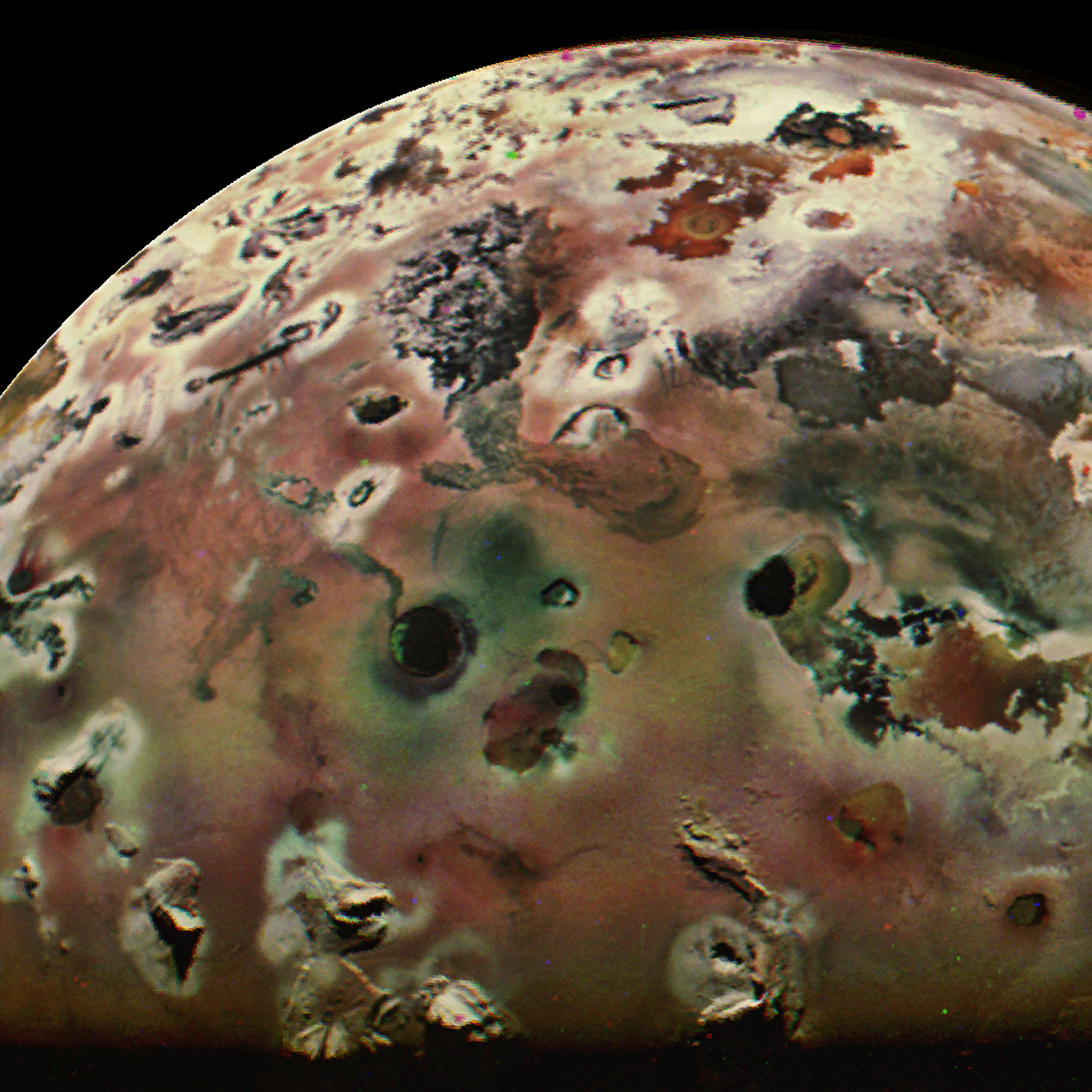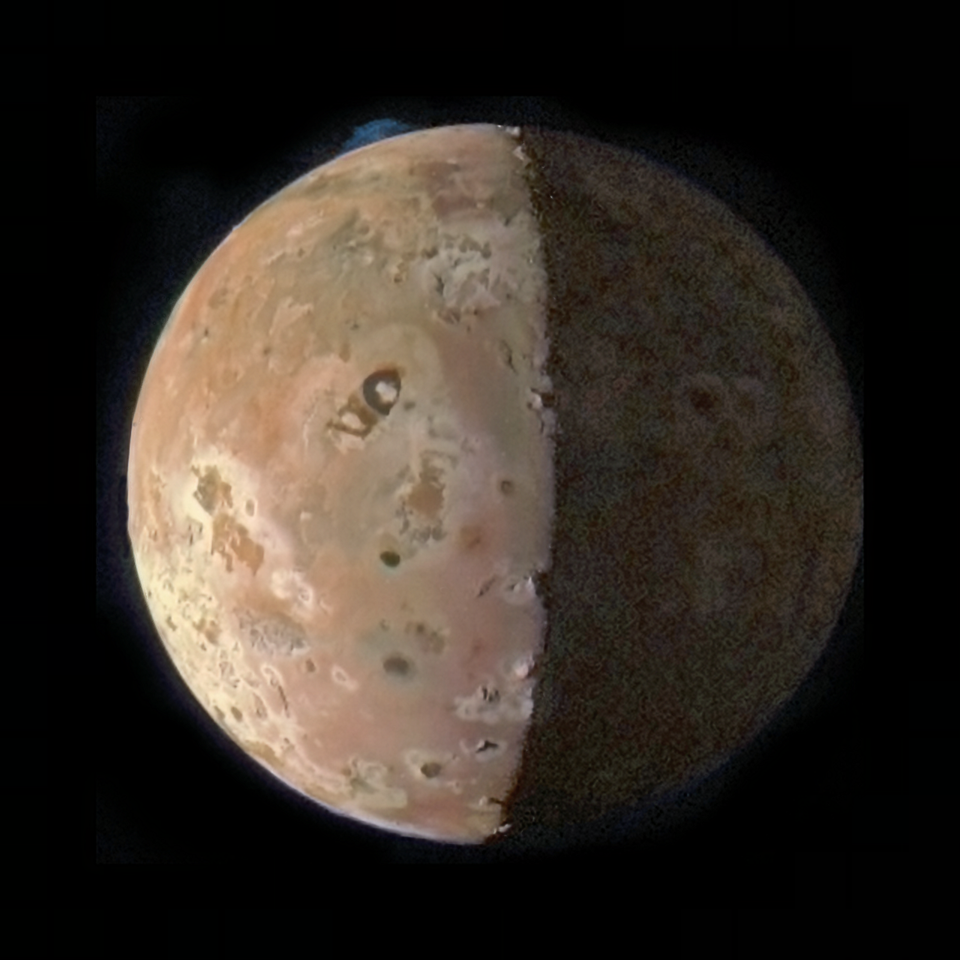Io is a world like no other, at least within the Solar System. Eruptions from 400 active volcanoes constantly turn it inside out. The Juno spacecraft has provided stunning images of this moon of Jupiter taken during its first flyby. Already, image processors, professional and amateur, are drawing out details that might be missed in the raw photographs.
We’ve known there was something odd about Io for more than 400 years. Its discovery, along with the other three Galilean satellites, rocked astronomy. Once the shock of its existence wore off, people noticed its red coloring, while the three other large moons of Jupiter are white.
The Voyager missions revealed what was special about it: volcanic eruptions are constantly resurfacing the planet. Most other moons of gas giants are covered in ice, but Io’s surface has a lot of sulfur. Carl Sagan called it a world “smelling like rotten eggs and looking like a pizza pie”.
You can reach your own judgment about what Io most resembles, but whizzing just 1,500 kilometers (930 miles) above Io’s surface, Juno has returned stunning images that will be poured over for years to come. Juno has been orbiting Jupiter for seven years, but for most of that time its focus has been on the planet itself. Only now is attention turning to the moons.
The close passage is about more than just taking high-resolution images of the surface. Io and Europa are both surrounded by donut-shaped rings of ions thanks to their location within Jupiter’s immense magnetic field. Juno flew through that. The data collected should be important scientifically, as well as being used to prepare JUICE and the Europa Clipper to make similar passages safely.

Not every method of processing Juno’s images is attractive, but that doesn’t stop them being interesting.
Juno will make another close pass of Io on February 3. Io’s gravity has already reduced Juno’s orbital period from 38 to 35 days, and the next passage will bring that down to 33 days. That passage will allow planetary scientists to compare the images to seek changes to Io’s surface in a short period of time. There will be further flybys of Io every second time Juno approaches Jupiter, but none will be as close as these two.
Image processing from Juno’s controllers will take time, but already plenty of others are onto the task.
Io’s intense volcanism comes from having its innards constantly stretched and relaxed through its changing distance from Jupiter and the gravitational tug of the accompanying moons. At Europa’s more comfortable distance from the gravity well, these effects create enough heat to melt the ice beneath the outer shell and create an internal ocean. Closer in, Io generates much more heat, turning rocks molten and leading the magma to burst through the surface. In the process, Io has lost almost all its water, making it the Solar System’s densest moon.

With so many active volcanoes, there’s often one erupting, and Juno caught the plume from one near its pole.
Io is so volcanic it was thought to be the only world in the Solar System, other than the gas giants, without impact craters. However, just last month, evidence emerged this probably is not true. The images taken in these close passes will be scoured by amateurs, and perhaps by professionals, looking for further examples.
Source Link: Closest Flyby In 20 Years Provides Spectacular Images Of Jupiter's Moon Io